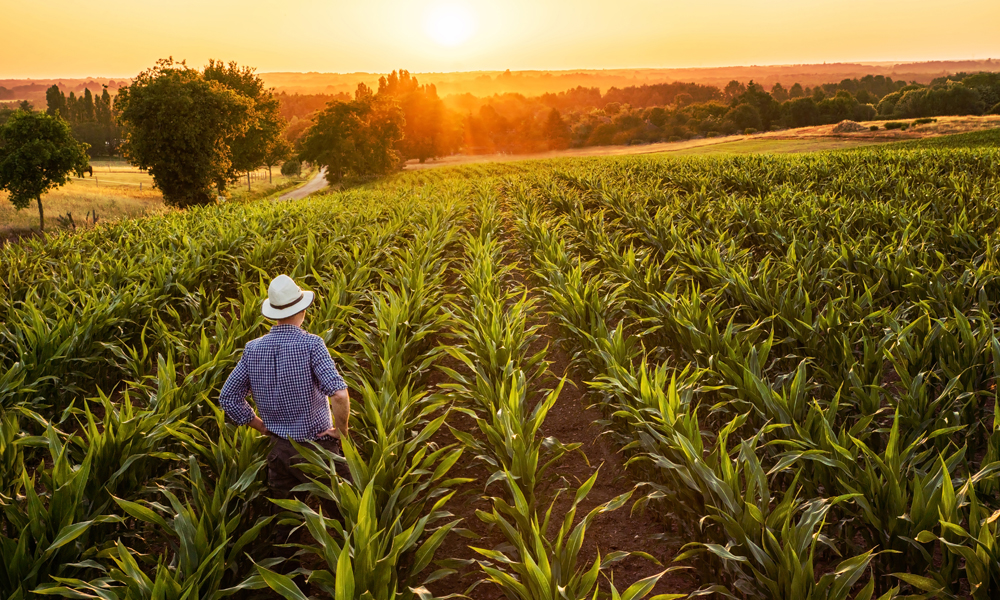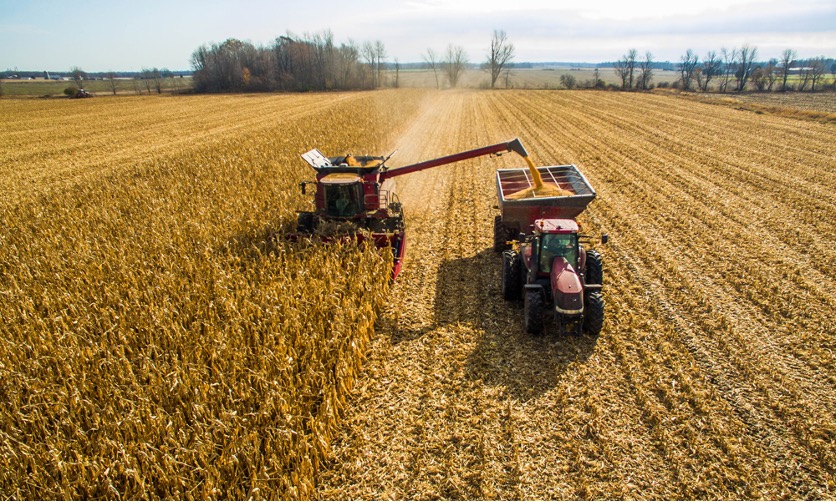Farmers and producers, it’s time to make your voice heard in Washington, D.C.
As Congress hammers out the 2023 Farm Bill, funding and support for crop insurance subsidies are on the line. The highly regarded crop insurance program from the 2018 Farm Bill could be in intense competition with food stamp funding, which is beset with pressures from inflation and a possibly slowing economy.
But Dan Koster, an Ag Division Leader at Minnwest Bank, points out that risk management component has a profound effect on the fortunes of the many family-operated farms — and our food supplies. The Federal Crop Insurance Program makes crop insurance coverage available to farmers from the private sector through subsidies to protect commodity losses to natural events as well as market price declines.
“Without a safety net for farmers, our cost of food could skyrocket,” Koster says. “Farmers stand to lose a lot if they cut back on this risk management tool.”
He’s seen firsthand how insurance subsidies have protected and even saved operations with drought, wind- and hail-damaged crops. Even though farm incomes have been healthier than normal these past few years, the need for risk management has not lessened — particularly with ever-shifting market conditions.
For that reason, Koster says, it will be critical to continue the success of the strong, robust crop insurance program passed in the 2018 Farm Bill.
That’s why he encourages farmers in Minnesota to stay informed, and reach out to their congressional representatives.
“They have to get involved and let them know how much it means to their operation to have a strong Farm Bill,” Koster says. “Because if we don't contact the people in politics, we're not going to have a voice.”
What’s in the Farm Bill?
As the House and Senate Ag committees draft and debate the 2023 Farm Bill, they’ll be carving out an estimated $1.5 trillion among various farm and nutrition programs for the next five years.
- Nutrition
- Crop insurance
- Conservation
- Commodities
- Trade
- Energy
- Rural development
- Research
- Forestry
- Horticulture
- Credit
While the Farm Bill funds many ag programs, the lion’s share — more than three-quarters — goes to anti-hunger efforts. With the effects of inflation and another 8% increase in food prices forecast in 20231, lawmakers will have to decide whether to increase the allocation for the Supplemental Nutrition Assistance Program (SNAP) to maintain the same level of support. Ag supporters will want to see Congress maintain support for crop insurance, building on what is widely viewed as a successful 2018 Farm Bill.
Why is SNAP part of the Farm Bill in the first place? During the 1970s, Congress added nutrition funding to the Farm Bill to give urban lawmakers a stake in passing legislation that supports ag programs. That said, SNAP does have significant economic impact in rural areas — double that of urban areas, according to a USDA report.2
Take Action: Speak out to your representative
Who writes the Farm Bill? Congressional representatives who sit on the Senate and House Agriculture Committees are responsible for drafting the farm bills, and they go on to be passed by the full House and Senate. While the 2018 Farm Bill is set to expire at the end of September 2023, it could be extended into 2024 and beyond if the Ag Committees and full Congress fail to reach an agreement by the deadline.
Not sure who your representative is? Enter your zip code in this finder tool to get connected. Send an email to your representative and senator and tell them the importance and impact of the crop insurance subsidy, and that it’s critical for the survival of family operations and our food supply. To stay connected to their events and appearances, sign up for their newsletters.
First district Republican Rep. Brad Finstad and second district Democratic Rep. Angie Craig both serve on the House Agriculture Committee, while Democratic Sens. Tina Smith and Amy Klobuchar are members of the Senate Ag Committee.
Expertise you can trust
At Minnwest Bank, our agri-business bankers have gained the trust of growers across Minnesota. That’s because they’re also farmers and producers who live and work in your community. We know what’s at stake and we have the resources to help you find solutions.
Get expertise you can trust to help your farm thrive. Make an appointment with a Minnwest ag banker today.
- Food prices will rise again in 2023, putting more pressure on families | Harvest Public Media
- Food stamps boost rural economies more than urban ones | Harvest Public Media


